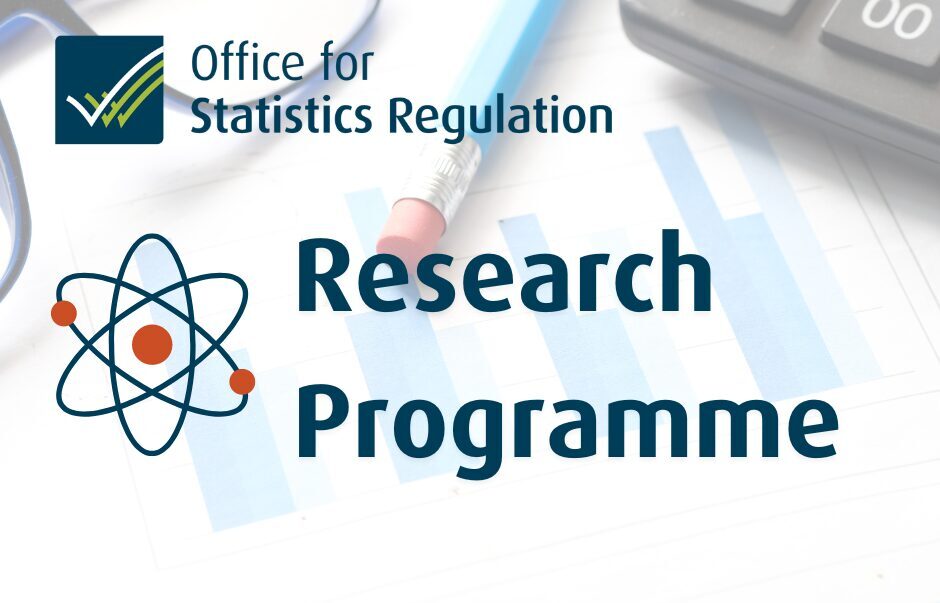2. Introduction
2.1 Our interest in statistics serving the public good
As the regulatory arm of the UK Statistics Authority, the Office for Statistics Regulation’s (OSR’s) statutory objective is ‘promoting and safeguarding the production and publication of official statistics that serve the public good’. As such, our vision is that statistics serve the public good, a goal shared by the wider UK Statistics Authority and highlighted in its strategy Statistics for the Public Good.
In OSR we make judgements every day on whether statistics are collected, produced, published and used in a way that serves the public good. In doing so, we strive not only to serve the public good ourselves, but to support the wider statistical system to do so as well. But when we say statistics are serving the public good, what do we really mean? How do official statistics serve the public good?
Given statistics that serve the public good is a widely shared goal, answering this question will improve the ability of the statistical system to make practical decisions and as such collectively deliver on our vision. In OSR we have a Research Programme that seeks to bring us closer to answers, and since its inception in 2019 we have undertaken a range of projects, in addition to looking across the statistical system and beyond to identify other evidence.
In January 2023, we undertook an affinity diagramming exercise, which is where a team works together to collate a body of evidence and identify themes within it. This focused on official statistics serving the public good and included findings from our Research Programme alongside reflections from our regulators and evidence from outside sources.
2.2 An invitation to discussion
The evidence we collated through our affinity diagramming shaped our thinking around how statistics serve the public good. Since that original exercise, we have sought further evidence, discussing this topic with individuals and groups, and inviting feedback at events to progress our thinking. However, is important to us that this is not a closed discussion – everyone should have the opportunity for a seat at the table. Therefore, we have chosen to open the floor for anyone with an interest to share their opinions by publishing our initial thoughts and unresolved questions in this think piece. As a think piece, this document is exploratory by nature and aims to promote discussion rather than definitively answer the question we are exploring. It articulates our thought process so far about how statistics can serve the public good and acts as an invitation for readers to join the discussion.
The perspective in this think piece is underpinned by a range of sources such as research evidence, regulatory experiences and philosophical discussions. We hope that the feedback we receive is just as varied, which is why we are publishing this openly and seeking views from anyone with interest or expertise in the topic of statistics serving the public good.
We are eager to share our thinking with you and we invite you to participation in this work by sending your views to regulation@statistics.gov.uk.Your contribution will be greatly appreciated.
2.3 Structure of this think piece
This think piece sets out our views so far about how official statistics may serve the public good. There are two main sections:
- How we currently see statistics serving the public good; and
- Why we arrived at this conclusion.
For the section on how we currently see official statistics serving the public good, we explain our overall perspective – how we have tackled the question, and an initial answer.
For the section on why we arrived at this conclusion, we go into greater detail on our thought process and evidence-base for different aspects of the answer we are currently working with.
In some areas, the evidence we have encountered and discussions we have held to date point in a single direction. In these cases, we use this think piece to set out our stance. In other areas, however, the picture is less clear. To support the conversation around areas where there is less clarity, we have included ‘discussion boxes’ setting set out questions we are still debating. Although we are open to receiving views on any aspect of this think piece, these ‘discussion boxes’ highlight areas where new contributions would be most valued.
Back to top
